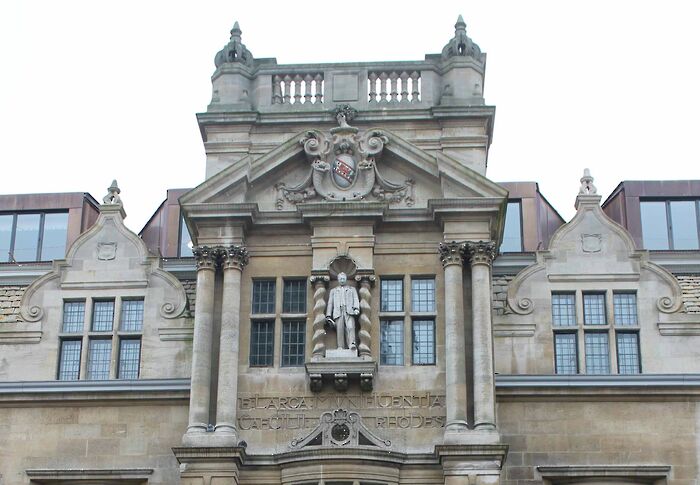Fact check: Jan Smuts portrait and bust were not ‘toppled’ by Cambridge students
The Sunday Times reported that a portrait and bust of Jan Christian Smuts have been “removed from prominent public display” in Cambridge, but sources have confirmed otherwise

The Sunday Times ran a news article yesterday with the headline, ‘Cambridge students topple bust of Britain’s wartime ally Jan Smuts’, alongside an accompanying opinion piece which argued that as “Cambridge University has turned against the former South African prime minister Jan Smuts, it may need to rename Churchill College”.
The news article reported that a portrait of Jan Smuts – a former prime minister and advocate of white rule and racial segregation in South Africa – has been “taken down” from the formal hall of Christ’s College, and that a bust of Smuts has “been moved from a public area of the Old Schools building”, which houses the University’s main administrative offices.
However the college confirmed today to Varsity that the portrait of Smuts has not been moved from its usual place in Christ’s formal hall.
Christ’s College Senior Tutor Dr. Robert Hunt called The Sunday Times’ reporting that the portrait had been taken down “rubbish”. He said that the portrait had been “temporarily” taken down “a few years ago”, but that the College had “swapped it back again.”
The University confirmed that the bust is “still in Old Schools”.
The article cited a chapter in the book of essays, “Dethroning Historical Reputations: Universities, Museums and the Commemoration of Benefactors” which was written by University Council member John Shakeshaft, who wrote that “busts and former portraits [of Smuts] have now been removed from prominent places.”
The Sunday Times article erroneously compared #RhodesMustFall – a campaign at Oxford calling for the removal of the University’s statue of imperialist Cecil Rhodes – with the reported relocation of the Smuts memoriams. It characterised the change as evidence of the #RhodesMustFall campaign having “claim[ed] another scalp”, yet cited no evidence of any recent student-led effort within Cambridge or elsewhere to remove physical tributes to Smuts.
Neither Christ’s College nor the University as a whole has seen a recent concerted or sustained effort by its student body to remove the portrait or bust.
The article claimed that tributes to Smuts have come “under fire from anti-colonial student protesters”, yet neither Christ’s College nor the University as a whole has recently seen a concerted or sustained effort by its student body to remove the portrait or bust.
The portrait was raised as a topic of discussion in an open meeting of the Christ’s College JCR in March of this year, in which the undergraduate student body present concluded that “more context” on Smuts’ role in South African white rule should be placed by the portrait.
Christ’s JCR President Grace Etheredge and JCR Vice-President Oliver Jones told Varsity in a joint statement that the “general consensus has been for portraits to remain”, but that historical context of controversial figures should be added outlining “the good and bad of what they did so as to not white wash college history”.
The Smuts portrait was previously a point of tension in 2015, where Christ’s JCR then-BME Officer Lauren Cunningham-Amos met with fellows three times about the portrait. She also launched a three-year campaign to hang more portraits of BME alumni of the college, following which a portrait of Szeming Sze, co-founder of the World Health Organisation, was added to the Hall.
The issue of the Smuts portrait was also brought up in February 2016, when the BME officer at the time, Phelan Chatterjee, organised an event: ‘Must Smuts Fall? Apartheid Legacies and Eurocentric Heroification’, which included a speech by Hakim Adi, Professor of African History and the African Diaspora at the University of Chichester. The event served as an exploration of the question of how the University should confront its colonial legacy more broadly.
Jan Smuts graduated from Christ’s College in 1894 with a degree in law, and was chancellor of the University in his later life.
Smuts, who was a commander in the Second Boer War and a prominent South African politician, consistently advocated for racial segregation and publicly denigrated the black population of South Africa. Though falling short of calling for an apartheid state, he was instrumental in passing several racist laws which would later serve as the framework for the establishment of apartheid South Africa, in placing initial restrictions on land purchasing rights of the black population outside of ‘reserves’.
Following Smuts’ death, the University established the Smuts Memorial Fund, to “support the advancement of Commonwealth Studies” in providing research grants, PhD scholarships, and library grants.
 News / Cambridge academics stand out in King’s 2026 Honours List2 January 2026
News / Cambridge academics stand out in King’s 2026 Honours List2 January 2026 Interviews / You don’t need to peak at Cambridge, says Robin Harding31 December 2025
Interviews / You don’t need to peak at Cambridge, says Robin Harding31 December 2025 Comment / What happened to men at Cambridge?31 December 2025
Comment / What happened to men at Cambridge?31 December 2025 News / Varsity’s biggest stories of 202531 December 2025
News / Varsity’s biggest stories of 202531 December 2025 Features / “It’s a momentary expression of rage”: reforming democracy from Cambridge4 January 2026
Features / “It’s a momentary expression of rage”: reforming democracy from Cambridge4 January 2026











